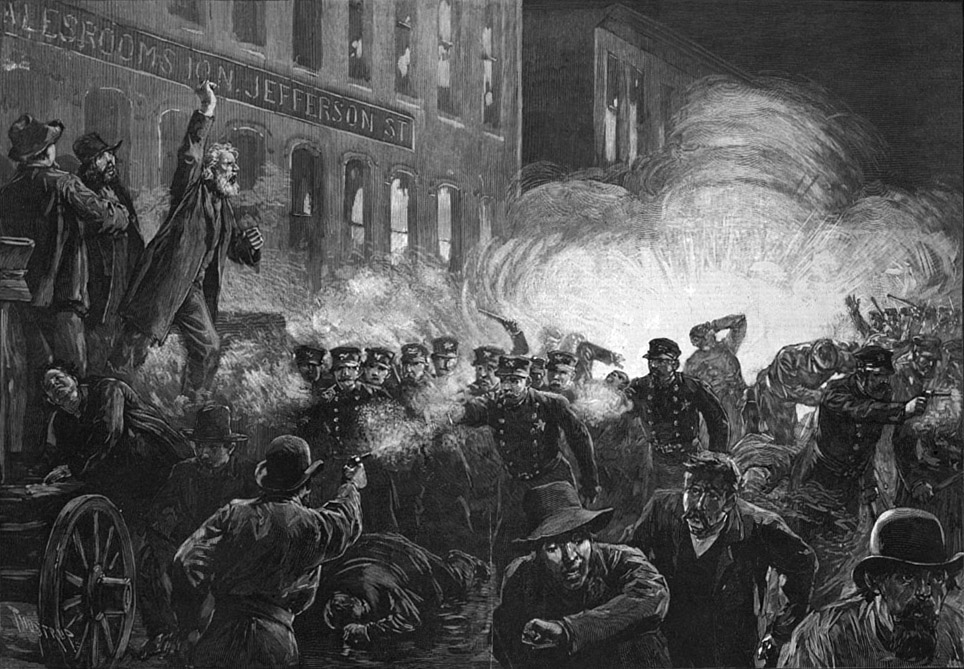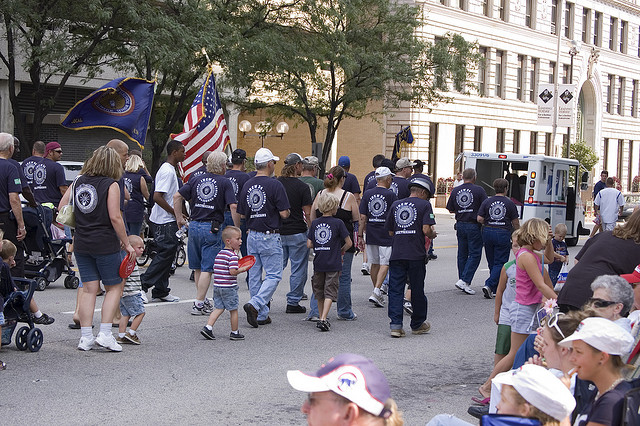
The Macguires and Developing Tradition
The origins of Labor Day can be found in the 1800s during America’s Industrial Revolution. The average American might have started working as early as six years old and was forced to work 12 hours a day, seven days a week to support themselves and their families. These hardships led to the rise of labor unions and a collective desire for change.
Some attribute the idea of a holiday for the workingman to Peter J. McGuire, the general secretary of the Brotherhood of Carpenters and Joiners and one of the cofounders of the American Federation of Labor. He is credited with suggesting a holiday in honor of those “who from rude nature have delved and carved all the grandeur we behold.”
Others believe that the machinist Matthew Maguire was the true inspiration behind Labor Day. While serving as secretary of the Central Labor Union in New York, it appears that Maguire proposed the holiday in 1882. That same year, on September 5, the union organized a parade of 10,000 workers in New York City. The Central Labor Union repeated the parade again the next year and, by 1884, Labor Day demonstrations had started appearing in industrial cities throughout the country.

A National Holiday
Oregon was the first state to legally recognize a holiday celebrating its workers, declaring a state wide Labor Day on February 21, 1887. Colorado, Massachusetts, New Jersey, and New York quickly followed suit. Up until this point, workers who wished to participate in the labor marches were forced to choose between attending the event or a day of paid work.
It wasn’t until 1894, an election year, that President Grover Cleveland adopted the idea for a national workingman’s holiday. The President seized on the idea of this national holiday in the wake of public disapproval for the way he handled the labor movement.
In 1893, in response to a massive railway worker strike lead by the American Railway Union to demand higher pay and protest massive layoffs, President Cleveland declared the strike a federal crime and sent 12,000 soldiers to break the strike. The President’s order came under pressure from the railroad executives and the threat of prolonged interruptions of mail trains. Violence erupted between the troops and protestors, and by the time the Pullman Strike was broken in 1894, two protestors had been killed by U.S. deputy marshals.
In 1896, workers gathered in Chicago’s Haymarket to demand an 8-hour work day. After a full day of peaceful demonstration, an unidentified individual threw a bomb at the police, killing one officer immediately and injuring several others. The police responded by opening fire on the protesters and the Haymarket affair ultimately claimed the lives of several policemen and demonstrators. Four individuals allegedly involved were tried and hanged.
By the time the Labor Day bill came across his desk, it was too late for President Cleveland. He was not reelected.
It was in 1896 that Labor Day was first celebrated nationwide on the first Monday in September.

The Changing Face of Labor Day Today
Today, Labor Day is still celebrated with parades, demonstrations, and speaking events throughout the country. However, it is now more common to celebrate Labor Day not for its storied and at times violent history, but as a welcome day off. It signifies the end of summer and, for many, the start of the school year.
Of course, the movement behind the holiday has not lost any relevance. In an interview with NPR, Associate Professor of Sociology and American Studies at Wesleyan University Jonathan Cutler noted that while blue-collar workers reap the benefits of the labor movement and related legislature, issues such as over-time pay and work week length are still quite relevant for today’s white-collar workers.
“If there is anyone who needs to attend to the spirit of Haymarket,” Cutler says, “it is the American white-collar professional who works 10 hour days, including many weekends, and who has fewer paid vacation days than other white-collar professionals around the world.”
So even as you celebrate this Labor Day by kicking up your feet with a beer and a barbecue, keep in mind that there is more that can be done for the future of workers’ rights.
Sources: U.S. Department of Labor, NPR.org, History.com, Time.com, PBS.org
Image Sources: Wikimedia Commons 1, 2, Flickr.com


